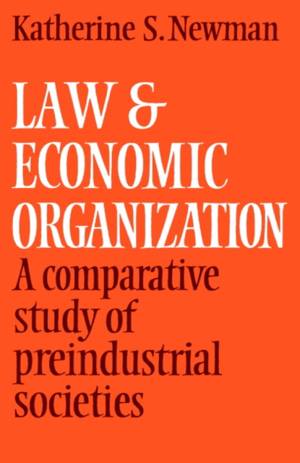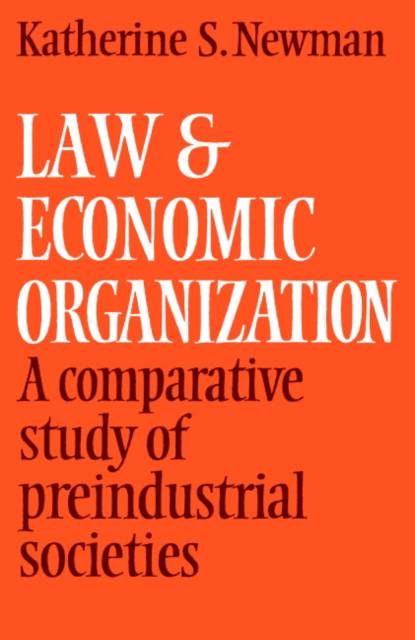
- Afhalen na 1 uur in een winkel met voorraad
- Gratis thuislevering in België vanaf € 30
- Ruim aanbod met 7 miljoen producten
- Afhalen na 1 uur in een winkel met voorraad
- Gratis thuislevering in België vanaf € 30
- Ruim aanbod met 7 miljoen producten
Zoeken
Law and Economic Organization
A Comparative Study of Preindustrial Studies
Katherine S Newman
Paperback | Engels
€ 53,45
+ 106 punten
Omschrijving
The question why certain kinds of legal institutions are found in certain kinds of societies has been little explored by anthropologists. In this book Katherine Newman examines a sample of some sixty different preindustrial societies, distributed across the world, in an attempt to explain why their legal systems vary. The key to understanding this variation, Professor Newman argues, is to be found in economic organization. Adopting a Marxian, or materialist, approach, she draws on original ethnographic sources for each culture in order to investigate how legal processes and institutions regulate basic aspects of economic life in societies with differing types of economic organization. She also examines the commonalities of law within various preindustrial 'modes of production' and shows that the patterning of legal institutions arises from underlying tensions in production systems. In offering an explanation of the distribution of legal institutions across preindustrial societies, as well as for the sources of conflict in such societies, the book makes an important contribution to the comparative study of legal systems. It will interest anthropologists and other readers concerned with the operation and development of legal institutions.
Specificaties
Betrokkenen
- Auteur(s):
- Uitgeverij:
Inhoud
- Aantal bladzijden:
- 280
- Taal:
- Engels
Eigenschappen
- Productcode (EAN):
- 9780521289665
- Verschijningsdatum:
- 30/12/1983
- Uitvoering:
- Paperback
- Formaat:
- Trade paperback (VS)
- Afmetingen:
- 143 mm x 206 mm
- Gewicht:
- 367 g

Alleen bij Standaard Boekhandel
+ 106 punten op je klantenkaart van Standaard Boekhandel
Beoordelingen
We publiceren alleen reviews die voldoen aan de voorwaarden voor reviews. Bekijk onze voorwaarden voor reviews.











